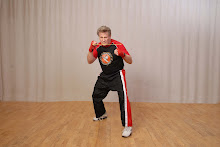Virtually all forms of martial arts seem to have or claim to offer some traditional form of a spiritual or philosophical base. Each appears to adhere to the premise that the practice of any such martial art discipline will eventually enable one to become enlightened and more evolved as a person. This phenomenon is not automatic nor is it infallible.
Man's mind is his ultimate tool for survival, both in life and in martial arts. His fundamental efficacy as a martial artist is based on his ability to trust in his method of thinking, and this has little to do with what discipline or in which style of martial arts he participates. The objective process of rational thinking, (being more critically conscious), will enable a martial artist to avoid accepting the unchallenged, out-dated teachings of those self-appointed authorities that still permeate our field, and also to be able to avoid imagining that our feelings are an infallible guide to truth.
How does one find the best way to make these critical judgments about his training---his system as compared to others, or evaluating his technical skills, or to identify and correct any flaws in his competitive endeavors such as sparring?
There has always been an intellectual excitement when it comes to the challenge of being able to analyze the actions of a competition bout or its final outcome. This process can be made easier if we have access to a proven method of analyzing the action that anyone can understand and use. Allow me to offer these suggestions that a number of world class fighters and champion trainers have worked with over the years.
To begin, of course, one has to know what to look for as he observes any martial arts bout. There are both physical attributes one must identify such as speed, power, and fluidness, and also, there are psychological or mental factors that also play an important role such as aggressiveness, a sense of courage, sound focusing, or an indomitable will.
This interaction between ones physical attributes and ones mental actions will determine how well a fighter exercises the abstract principles (his strategy) needed to perform with rhythm, sound judgments, speed, timing, or accuracy in order to achieve a successful outcome. On my web site I have broken these abstract principles down into the "40 Universal Fighting Tactics." I have placed them into five categories which I have called "Pillars" to make them easy for any trainer to memorize and to teach his students.
If you are one of the many world-wide martial artists who has taken advantage of becoming one of our JLFS members, you will enjoy sharing in all of the upcoming critiques constantly placed on our site. The following is a possible example of how easy it would be for someone to use this process to cross-reference a change in one's performance I may critique. For instance, when you see me state that one combatant is "covering up and stopping inside the pocket after an attack," you will immediately know how to refer to that subject under the Pillar called "Dominating the Pocket."
Most of the terms and vocabulary we use have been around in the fight game for decades. For example, when I state----close the door, turn him, walk him to the ropes, shovel punch, fish hook the neck, reflex-timing, the forty-five punch, full-torque or half-torque punching, critical distance line, farewell knee strikes, or an upright slip vs. the crouching slip, or what's the defensive triangle, or the difference between a quick step and the drop step, these universal terms will immediately become part of your teaching vocabulary.
Members of our JLFS team are privileged to be able to send me their personal sparring/fighting sessions to be critiqued. The better academic ones will be selected on a frequent basis to appear as part of my blog and/or for membership viewing.
Take advantage of this never before offered opportunity!
Regardless of whether we're doing light sparring or we're in a real match, we should not waste the opportunity to gather feedback on our weaknesses so we can adjust our practices, which in turn will improve our actual skills for the next fight. As such, we should always have someone video tape our matches so we can evaluate them – or, even better---have a senior trainer evaluate them.
That's the main reason I just initiated a new fight video evaluation service on the members-only section of my JoeLewisFightingSystems.com web site. JLFS members can submit videos (YouTube clips) of their fights and I will post my evaluation for all of the members to see. That way, not only can the person posting his fight get feedback, but everybody else can learn as well. They can either study items that likewise apply to them or they can become more adept at identifying similar weaknesses in their opponents the next time they are in the ring.
However you go about it, don't waste these opportunities to turn your fights into learning experiences by reviewing the videos afterwards with someone who can offer you valuable feedback.
"Fights are never lost; you only lose if you fail to learn something."

Awesome, just awesome
ReplyDeleteJust testing - my brain is not as well equipt as this computer - I'm going to try and post
ReplyDeleteIt's just has a lot of stuff I've never seen and I don't know what to do with it
This comment has been removed by the author.
ReplyDelete